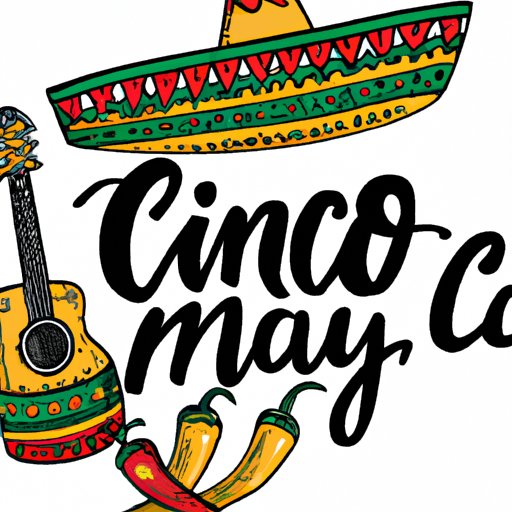Introduction
Every year on May 5th, people all over the world celebrate Cinco de Mayo. While many people view it as a day to party and consume margaritas and tacos, there is a much deeper history and meaning behind the holiday. In this article, we’ll explore the history and cultural significance of Cinco de Mayo, and provide tips for celebrating the holiday in an authentic and respectful way.
The History and Meaning Behind Cinco de Mayo
Cinco de Mayo commemorates the Mexican Army’s victory over the French Empire at the Battle of Puebla on May 5, 1862. It is important to note that this is not Mexican Independence Day, which is celebrated on September 16th. The battle was a turning point in the war against the French, as the Mexican Army, despite being outnumbered and under-equipped, successfully defended their country against colonialism.
The holiday’s significance goes beyond the military victory, however. It became a symbol of Mexican resilience in the face of oppression and invasion. For Mexican-Americans, It is a proud celebration of their heritage and culture, and a reminder of the struggle for freedom and equality.
Celebrating Cinco de Mayo
There are many traditional foods and drinks associated with Cinco de Mayo. Tacos, enchiladas, guacamole, and salsa are just a few examples. Margaritas, tequila, and Mexican beer are also popular beverages. It’s important to note that Cinco de Mayo is not a license to appropriate Mexican food and drink, but rather an opportunity to appreciate and celebrate Mexican cuisine.
Parades and dances are common ways to celebrate Cinco de Mayo in Mexico and the United States. Traditional dances like the Jarabe Tapatío and salsa dancing are also popular. If you’re planning a Cinco de Mayo party, consider incorporating traditional decor like papel picado, bright colors, and traditional Mexican music.
Here’s a recipe for an authentic guacamole dip:
- 3-4 ripe avocados
- 1/2 small onion, finely diced
- 1 medium tomato, diced
- 2-3 garlic cloves, minced
- 1 handful of fresh cilantro, chopped
- 1 lime, juiced
- Salt and pepper to taste
Simply mash the avocados in a bowl, add the remaining ingredients, and mix well. Serve with tortilla chips or as a topping for tacos or burritos.
The Impact of Cinco de Mayo on Mexican-American Culture
For Mexican-Americans, Cinco de Mayo is a symbol of cultural pride and heritage. It has been celebrated in the United States since the late 19th century, as a way to honor the struggles and achievements of the Mexican people. The holiday has played an important role in shaping Mexican-American identity, and has become a way to assert their cultural presence and voice against racism and discrimination.
Cinco de Mayo has also led to the rise of other cultural expressions, such as Chicano art, literature, and music. Mexican-Americans have used the holiday as a way to showcase their creativity and promote social justice.
Misconceptions and Controversies Surrounding Cinco de Mayo
Unfortunately, Cinco de Mayo has also become a target of cultural appropriation and stereotypes. Many people use the holiday as an excuse to dress up in sombreros and mustaches, and perpetuate harmful stereotypes about Mexican people.
It’s important to celebrate Cinco de Mayo in a respectful and authentic way, and to acknowledge the historical and cultural significance of the holiday. This means learning about Mexican history and culture, respecting the traditions and customs, and avoiding appropriative behavior.
Cinco de Mayo Around the World
Cinco de Mayo has spread far beyond Mexico and the United States. In Canada, Australia, and other countries, people celebrate the holiday as a way to honor Mexican culture and heritage.
The holiday has also become a tourist attraction in some parts of the world. In Los Angeles, for example, there is a large Cinco de Mayo festival that draws thousands of people from all over the world to dance, eat, and celebrate Mexican culture.
Conclusion
Cinco de Mayo is a holiday that represents a powerful moment in Mexican history, and a celebration of Mexican heritage and culture. It is an opportunity to learn, appreciate, and celebrate the rich history and traditions of the Mexican people. By respecting the holiday’s cultural significance and celebrating in an authentic way, we can honor the struggle and triumph of the Mexican Army and continue to uplift and celebrate Mexican heritage and identity.
